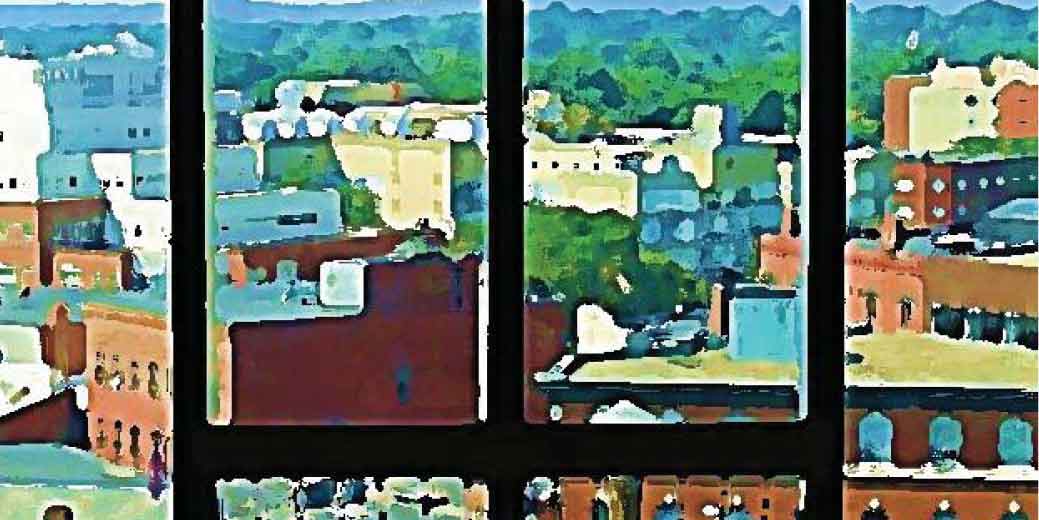
“Space Oddities – Urbanity, American Identity, and Cultural Exchange” was the topic of the 41st annual AAAS conference. The event took place on November 21-23, 2014, at the University of Graz.
When we think of American cities, we have a complex (and often contradictory) set of images in mind, possibly encompassing glimpses of the Boston Marathon bombings, postcard motifs of the One World Trade Center, and palm trees on Sunset Boulevard, L.A. In its various shapes and discourses, the American city functions as both a parameter and an expression of the complexities of U.S. social practice. At the same time, it also serves as a prism of overarching social and cultural transformation.
This conference is interested in tracking these recent changes by focusing on the ‘oddities’ of the American urban imaginary in the age of globalization and deterritorialization. “The city as we imagine it, the soft city of illusion, myth, aspiration, and nightmare,” Jonathan Raban points out, “is as real, maybe more real than the hard city one can locate on maps, statistics, monographs on urban sociology, demography and architecture.” Our line of inquiry reflects Raban’s idea of the ‘soft city,’ but also follows Henri Lefebvre’s premise in The Production of Space that every society produces its own space as a means of expressing its specificity and distinction from other societies.
Thus conceived, the city serves as a site of negotiation between America’s ‘lived space,’ marked by the experience of transcultural encounter and ethnic heterogeneity, and the nation’s ‘abstract space,’ defined by more ideological, mythological, and institutionalized patterns. Following Lefebvre’s three modes of spatial production, namely perception, representation, and imagination, we will examine the conflicting genealogies, aesthetics, and functions of U.S. American
urban space in recent years.
Possible targets of discussion include “real-and-imagined places” (E. Soja), such as Las Vegas and Los Angeles, as well as more historically grounded metropolises such as New York City and Chicago. What all American cities seem to have in common is that they participate in a discourse that Edward Soja has put under the header of an “imaginative geography,” that is, a form of cognitive mapping that constructs national and cultural identity along the lines of geographic borders. Special attention will be paid to three forms of American spatiality:
- lived urban spaces (Atlantic/Pacific cities, transcultural modes of exchange, urban subcultures, etc.)
- mapped spaces (city charts, Google maps, etc.)
- imaginary and mediated spaces (fake cities, simulacra such as Disneyland, literary and cinematic cities, etc.).
Issues of Spatiality and Urbanity
- Affective spaces – How can American cities be imagined in terms of affects and emotional involvement? How can urban space be visualized affectively (somatic rhythms, etc.)?
- Commercial spaces – In what way have spaces of capital (banks, malls etc.), in which identity is absorbed by commerce, in uenced the organization of American urban space?
- Gendered spaces – To what extent are American cities still divided into separate spheres (sports stadiums, shopping malls, public parks, etc.)? How have these divisions changed?
- Globalized spaces – How are U.S. metropolises structured along what Appadurai calls “global ethnoscapes” or what Soja has termed “thirdspace” (transnational areas within city life, etc.)?
- Heterotopias – In what way is American urban space permeated by “heterotopias” (Foucault), that is, utopias put into practice (asylums, prison houses, etc.)?
- Liminal spaces – How do border-crossing phenomena contribute to the production of American space (border cities, transcultural interchange between the U.S. and Canada/Mexico, etc.)?
- Public spaces and counter-publics – Which influence do subversive phenomena have upon the organization of urban space in the U.S. (Occupy, Gay Pride marches, etc.)?
- Racialized spaces – In what way are racialized/ethnicized spaces (Chinatown, ethnic subcultures, etc.) still inscribed into the American urban imaginary?
- Stratiieed spaces – To what extent can we find class hierarchies and social stratifications in the modern cityscape (ghettoes, suburbs, etc.)?
- Spaces of ageing – Is the category of age dominant in the appearance and representation of American cities (youth culture, etc.)?
- Temporal spaces – To what degree are rented and mobile spaces (hotels, cars, trains, etc.) involved in the construction of an aesthetics of fluid urban space?
- Virtual spaces – How have phenomena of digitalization (Facebook, Twitter, spaces of security, 3-D cities, etc.) shaped our understanding of urban territories in the U.S.?
Keynote Speakers:
- Laura Liu
(Assistant Professor of Urban Studies, The New School, New York)
“Sweatshop City: Migration, Labor, and Organizing in Urban Space”
- Gerd Hurm
(Professor of American Studies, Trier Center for American Studies, Universität Trier)
“Urban Fictions as Urban Studies: Reflections on an Intricate Relationship”
- Thomas Heise
(Associate Professor of English, McGill University, Montréal)
“Detecting Chinatown: Crime Fiction, Henry Chang, and the Politics
of Urban Inscrutability”
Meet the Artist:
- Peter Chanthanakone
(Assistant Professor of Animation, University of Iowa, 3D Animation)
“Virtual Reality of America: Visualizing American Spaces through Technology”